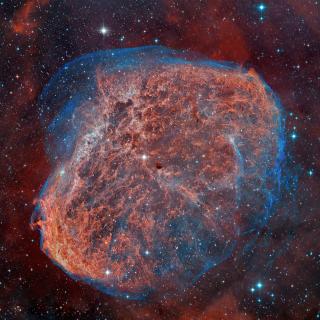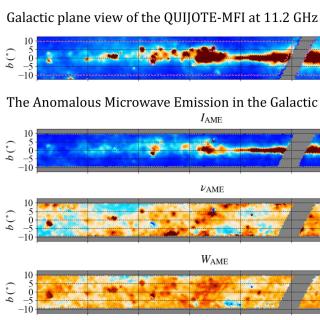The Butterfly Nebula (Minkowski 2-9) is an outstanding example of a highly collimated outflow from an evolved star. The formation of these extreme nebular geometries -i.e. how the (quasi)spherical symmetry that characterizes all the evolution of a solar-like star is broken when its envelope is ejected- is one of the most debated and controversial topics in the study of the late stages of stellar evolution.
Minkowski 2-9 gives us clear hints of what it might going on. This hourglass-shaped nebula is extraordinary in several aspects, but its outstanding characteristic is undoubtedly its moving pattern in the inner bipolar lobes, which resembles that of a terrestrial lighthouse. No similar objects are known in the sky.
In this study, we present the imaging monitoring in the last decade of the rotating pattern of Minkowski 2-9. Images were mainly obtained at the ORM with the Nordic Optical telescope. Complementary spectroscopic observations from the William Herschel Telescope are also presented.
The data reveal that the pattern moves around the unseen central star with a period around 90 years, and that it is likely to be produced by a rotating, highly supersonic beam of particles (a tenous jet) which hits and ionizes the gaseous walls of the hollow hourglass nebula. The jets travels at the unsually high speed of 10000-15000 km per second. At the densities of the gas in the nebula, certain atoms like O2+ recombine and their emission switches off as soon as the beam sweeps past, producing the observed effect of a rotating lighthouse (green feature in the figure).
All properties of the Butterfly Nebula point to the presence of a pair of interacting stars at its centre, the observed jet being produced as the result of mass transfer between the two components, and its rotation being a direct consequence of the orbital motion. This supports the hypothesis that binary star evolution is the preferred channel to produce extremely aspherical morphologies in planetary nebulae.
![HST image of the Butterfly nebula obtained by the authors on 1997. Red is Halpha+[NII], green is [OIII]. HST image of the Butterfly nebula obtained by the authors on 1997. Red is Halpha+[NII], green is [OIII].](/sites/default/files/styles/crop_rectangle_21x9_to_1280/public/images/news/resultados74_79.jpg?itok=Vgl20wNa)

